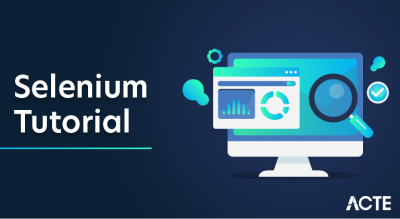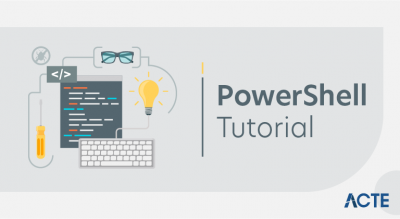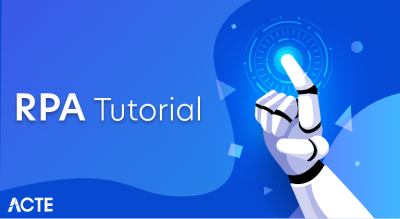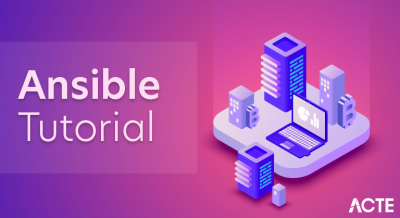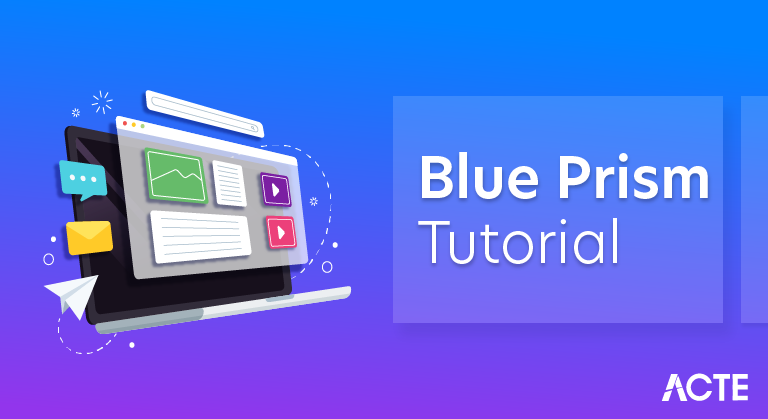
What is Blue Prism?
Blue Prism is a market leader in robotic process automation (RPA) software. It gives companies access to a digital workforce that can carry out repetitive, rule-based tasks automatically. “Digital Workers,” Blue Prism’s software robots, are used by the RPA platform to simulate human interactions with software, hardware, and data. Data input, data validation, report production, and system integration are just some of the many jobs these robots can do for businesses of all sizes and in various fields.
When it comes to creating, implementing, and maintaining automation processes, Blue Prism’s RPA solution offers a visual and user-friendly interface. It can link with many different kinds of business technology because to its intuitive drag-and-drop interface and graphical representation of business processes. Organizations may automate operations across departments using Blue Prism’s platform since it is scalable, safe, and dependable.
Blue Prism’s ability to function in a non-intrusive fashion by modifying just the user interface rather than the underlying systems or code is one of its primary benefits. This adaptability means it can be easily integrated into preexisting systems with little effort.
Because Blue Prism prioritizes enterprise-grade security and governance, businesses never lose command of their automation projects. It has a centralized management and monitoring system, as well as role-based access control, data encryption, audit trails, and more.
Key features and functionalities offered by Blue Prism’s
Organizations may automate business operations using Blue Prism’s RPA technology. Blue Prism’s primary features are:
- Blue Prism lets users drag-and-drop automation processes. This easy design environment lets users describe process flow tasks, actions, and decision points, making automation process creation and modification easier.
- Blue Prism’s technology supports enterprise-level automation. It lets companies deploy many software robots (Digital Workers) across settings for job allocation and resource optimization.
- Blue Prism provides several connectors and adapters to integrate with enterprise systems and applications. This facilitates data interchange, database interface, online service connectivity, and ERP and CRM system integration.
- Blue Prism lets users customize the system’s response to automation problems. It logs, notifies, and escalates errors to manage exceptions and restart automated activity without user involvement.
- Blue Prism prioritizes governance and security. It includes role-based access control, data encryption, secure credential management, audit trails, and activity recording. These features protect data privacy, meet legal standards, and govern automated processes.
- Blue Prism helps automate procedures. It lets businesses prioritize and distribute resources depending on workload. Scheduling rules, processing windows, and resource optimization are possible.
- Blue Prism’s in-built analytics and reporting functions provide light on the efficacy of automation procedures. Users may monitor work status, track key performance indicators, and generate reports to evaluate automation initiatives.
- The Control Room of Blue Prism oversees and monitors all automated operations. It allows for remote management, real-time monitoring of Digital Workers’ status, and the automated rollout of fixes and enhancements.
- With Blue Prism, businesses can seamlessly incorporate AI and smart automation into their existing infrastructure. By combining cognitive services, machine learning algorithms, and natural language processing, it enables complex automation scenarios and cognitive decision-making.
How can businesses implement Blue Prism effectively?
Here are some key steps and considerations for businesses to implement Blue Prism effectively:
- Clearly outline the reasons for deploying Blue Prism and what you want to achieve. Identify the tasks or procedures that would benefit most from automation. Create a plan of action that will get you closer to achieving your business’s long-term goals.
- Create a Center of Excellence or other specialized group to oversee the project. Members in the fields of business process analysis, information technology, and automation should all be represented on this team. The CoE’s role is critical to the success of the implementation, as it will be responsible for driving best practices, governance, and providing training and support.
- The first step in automating any process is to figure out which ones are possible to automate. Find the activities that have a high influence on efficiency or cost that are repetitive, rule-based, and boring. Find out which of your current workflows may use some automation by doing a comprehensive study.
- Collaborate with Stakeholders to Automate Your Business ProceduresGet buy-in from process owners, IT departments, and workers who will be impacted by the automation project. Collect their feedback, identify their problems, and keep them in the loop while the changes are made. Adoption can only be accomplished with sufficient cooperation and conversation.
- Use Blue Prism’s visual process designer to map out and create automated processes. Working together, business users and IT staff can guarantee that the automated system will provide the expected results and fulfill the needs of the company. Before releasing the automated processes, be sure they have been thoroughly tested.
- Blue Prism may be used to educate and cultivate a digital workforce. Give the automation team and the people who will be using the automated procedures thorough training. Make sure they have the knowledge to run, manage, and debug the automation properly.
- Control, compliance, and safety may all be established via the establishment of good governance processes. Determine who has access to what, how changes will be handled, and where records will be kept for audits. Data protection, credential administration, and meeting rules and regulations should all get your full focus.
- Start with a trial project or a limited collection of procedures to verify the efficiency of the automation, and then iterate from there. Incorporate input and findings from the pilot project into future iterations. Automatization efforts should be expanded gradually to include more tasks and more organizational units.
- Measure, analyze, and enhance the automated processes by keeping a close eye on their progress. Use Blue Prism’s reporting and analytics features to learn more about process performance, pinpoint problems, and locate opportunities for improvement. To get the most out of the automation, you should constantly assess it and tweak it.
- Create an environment where automation is celebrated and new ideas are actively sought out. Make sure your staff knows how automation may improve their job and contribute to the company’s bottom line by providing them with relevant information and training. Provide incentives for the use of automation and encourage staff to propose new possibilities for automation.
Benefits of using Blue Prism
Blue Prism helps companies by automating their procedures. Blue Prism’s advantages:
- Increased Efficiency: With Blue Prism, routine, rule-based processes may be automated, allowing workers more time to focus on strategic initiatives. Organizations may greatly improve their operational efficiency and production by automating formerly manual operations.
- Cost Savings: Blue Prism’s automation features cut down on costly human labor, saving businesses money. Blue Prism aids in optimal resource allocation and reduced operating expenses by standardizing procedures and cutting down on mistakes.
- Improved Accuracy and Quality: Accuracy and Quality are Both Increased because to Blue Prism’s Capability to Automate Routine Tasks. Achieving greater quality results and lowering the risk of mistakes may be done by removing human errors and variances.
- Scalability and Flexibility: Blue Prism’s flexible design and scalable architecture make it simple for businesses to expand their automation efforts as they see fit. It is scalable to meet the needs of any business and can manage a large number of operations.
- Enhanced Customer Experience: Blue Prism’s automation of customer-facing operations leads to a higher quality of life for the company’s end users. Improvements in response times, data accuracy, and the absence of human error all lead to happier, more loyal customers.
- Regulatory Compliance: Blue Prism helps businesses in their pursuit of regulatory compliance. Its encryption, access restrictions, and audit trails help businesses meet the requirements of the General Data Protection Regulation (GDPR) and the Health Insurance Portability and Accountability Act (HIPAA).
- Integration Capabilities: Blue Prism’s integration features make it possible for it to communicate and share information with a wide range of other platforms and apps. This enables enterprises to automate multi-system, end-to-end operations, which boosts productivity and information accuracy.
- Improved Employee Engagement: Enhanced Employee Engagement: Blue Prism’s ability to automate low-value, high-volume processes allows workers to devote their time and energy to projects that really matter to the company. Employee engagement and job satisfaction may increase if workers are freed up to focus on more mentally taxing activities.
- Rapid ROI: Blue Prism is a popular option because of the rapid return on investment (ROI) it provides and the little amount of time it takes to execute. The platform facilitates speedy adoption of automation, which in turn helps businesses reap advantages and save costs quickly.
- Continuous Improvement: With Blue Prism’s reporting and analytics tools, businesses get visibility into process performance, bottlenecks, and opportunities for enhancement, allowing them to make continuous improvements. This paves the way for continual optimization of automation programs and continuous process improvement inside enterprises.
How does Blue Prism work?
Blue Prism is an RPA platform that automates tasks in a company by use of “Digital Workers,” or software robots. An explanation of Blue Prism’s operation is as follows:
Process Design:
Blue Prism lets users design automation processes visually. Drag and drop actions, tasks, and decision points to simulate human interactions with applications and systems.
Software Robots (Digital Workers):
Blue Prism’s Digital Workers conduct process designer automation procedures. These robots can enter, validate, screen scrape, integrate, and more. Like humans, they employ user interfaces to engage with programs and systems.
Process Execution:
Digital Workers follow the automation processes once they are built and implemented. They log into apps, input data, obtain data, alter data, make choices based on specified criteria, and do other tasks.
Integration with Systems:
Blue Prism interacts with corporate systems, databases, applications, and technologies. It employs connections, APIs, and adapters to exchange data, invoke online services, and integrate with ERP and CRM systems.
Exception Handling:
Blue Prism handles exceptions well. Digital Workers may use specified exception-handling rules to handle errors. Logging the error, alerting users or administrators, retrying the activity, or manually intervening may be done.
Control Room:
Blue Prism’s Control Room manages and monitors Digital Workers and automation operations. It enables real-time monitoring, scheduling, task management, and automated process updates and modifications.
Security and Governance:
Blue Prism prioritizes security and governance. Security, role-based access control, data encryption, audit trails, and activity recording are available. These features protect data, comply with regulations, and oversee automated processes.
Analytics and Reporting:
Blue Prism includes analytics and reporting. It records process execution, metrics, and results. Reports and data analysis may reveal process efficiency, bottlenecks, and automation results.
What industries can benefit from Blue Prism?
Blue Prism’s RPA technology benefits enterprises in numerous sectors. Blue Prism benefits these industries:
- Banking and Finance: Blue Prism automates account reconciliation, loan processing, customer onboarding, compliance reporting, fraud detection, and payment processing for banks and finance companies.
- Insurance: Blue Prism streamlines claims processing, policy management, underwriting, policy renewal, data input, customer service, and regulatory compliance.
- Healthcare: Blue Prism automates patient data management, claims processing, billing and invoicing, appointment scheduling, medical records management, and insurance verification in the healthcare sector, allowing providers to focus on patient care.
- Retail and e-commerce: Blue Prism can automate retail and e-commerce tasks like order processing, inventory management, customer support, price monitoring, returns and refunds processing, and supply chain management.
- Manufacturing: Blue Prism automates inventory management, supply chain coordination, order fulfillment, quality control, equipment maintenance, and reporting, boosting productivity and saving money.
- Telecom: Blue Prism helps telecom firms improve customer experience and operational efficiency by automating client onboarding, service provisioning, invoicing, network management, order management, and customer care.
- Utilities: Blue Prism’s ability to automate activities in the utilities industry allows for more precise and timely operations in areas like meter reading and data management, billing and invoicing, customer care, energy usage analysis, and regulatory compliance.
- Human Resources: Blue Prism’s HR automation features make it possible for HR departments to devote more time to strategic planning and staff motivation rather than administrative tasks like onboarding, data administration, leave and attendance monitoring, payroll processing, recruiting, and performance management.
- Government and Public Sector: Improved efficiency and service delivery can be achieved in the public and government sectors by implementing Blue Prism’s automation capabilities in a wide range of processes, such as citizen services, permit and license processing, compliance reporting, document management, benefits administration, and tax processing.
- Legal Services: Blue Prism’s ability to automate document processing, contract administration, case management, legal research, and compliance reporting is a huge boon to legal departments looking to simplify their operations and devote more time to high-value work.
How does Blue Prism compare to other RPA tools?
The complexity of automation projects, the demands of the company, and the unique requirements of the project all go into the decision of which RPA technology to choose. Besides Microsoft Power Automate, other well-known RPA solutions include UiPath and Automation Anywhere. Organizations may choose the RPA solution that is the greatest fit for their automation objectives by comparing various platforms’ features, scalability, usability, security, and community support.
Scalability and Enterprise-Grade design:
Blue Prism is noted for its scalable design. It simplifies large-scale automation deployment and administration by providing centralized control, workload management, and process automation capabilities.
Security and Governance:
Blue Prism prioritizes these. Role-based access control, data encryption, secure credential management, and audit trails are included. These capabilities help firms comply with regulations, govern automation, and protect data.
Visual Process Design:
Blue Prism’s visual process designer simplifies automation operations. Business users and developers may cooperate on automation solutions utilizing its drag-and-drop interface.
Robust Exception Handling:
Blue Prism lets users specify how the system handles faults and exceptions throughout process execution. Users may handle exceptions, report errors, inform users or administrators, and adopt proper error handling procedures.
Integration Capabilities:
Blue Prism integrates with many corporate systems, applications, and technologies through a variety of connectors, adapters, and APIs. It allows smooth data interchange and system compatibility with legacy systems, web-based applications, databases, ERP and CRM systems, cloud platforms, and more.
Control Room and Monitoring:
The Control Room at Blue Prism is used as a nerve center for managing and keeping tabs on all automated activities. It allows for effective process management and control by providing real-time insight into the standing of Digital Workers, task management capabilities, scheduling, and monitoring of automation processes.
Partner Ecosystem and Community:
Community of Users and Developers, as well as an Extensive Network of Partners, Set Blue Prism Apart. This gives you access to a plethora of tools, assistance, and tips for successfully deploying Blue Prism and making the most of its features. Users are encouraged to work together and learn from one another inside the community.
Cognitive and AI Capabilities:
Blue Prism provides cognitive and AI capabilities that enable businesses to take advantage of intelligent automation. With its cognitive service and machine learning integrations, businesses can automate increasingly complicated operations and make choices based on hard facts.
Longevity and Market Presence:
Blue Prism has been around for a long time and is now a dominant force in the robotic process automation (RPA) industry. Its reputation and trustworthiness as an RPA solution provider are enhanced by its lengthy history and widespread availability in the market.
How does Blue Prism ensure data security and compliance?
Blue Prism prioritizes data security and compliance and provides many mechanisms and procedures to ensure these goals are met. Blue Prism ensures data safety and regulatory compliance by doing the following:
- Blue Prism uses secure credential management procedures to safeguard information such as user names, passwords, and access keys. Only authorized individuals and processes will be able to access your credentials since they will be encrypted and securely stored.
- To create user roles and permissions, Blue Prism uses role-based access control (RBAC). It ensures that only authorized users may access sensitive data and functions inside the system, and it also helps to properly categorize individuals.
- Blue Prism allows users to encrypt their data before sending or storing it. To safeguard information from being seen by the wrong eyes, encryption methods are utilized. The security of information is improved when it is encrypted and only authorized parties may decode it.
- Blue Prism has thorough audit trails and activity logs, documenting all user interactions, all system operations, and all data exchanges. Organizations may utilize these logs for compliance and auditing reasons, tracking and monitoring user access, changes to automated processes, and data exchanges.
- Blue Prism’s components and associated systems are guaranteed to communicate safely with one another. It allows for the use of encryption techniques and safe routes of communication, keeping information safe while in transit and thwarting any attempts at manipulation.
- With Blue Prism, you may authenticate users in a number of ways, including via interaction with your company’s existing identity management infrastructure. Only authorized users with certain roles and permissions will be able to access the Blue Prism platform.
- Blue Prism delivers updates and security patches on a regular basis to fix any newly discovered security flaws and keep the platform as secure as possible. Updates to Blue Prism should be routinely performed so that organizations may take advantage of the newest security patches.
- Access controls, data protection methods, and security policies are just a few of the Blue Prism features and capabilities that aid in security governance. It helps businesses monitor user access and verify that internal security requirements are followed.
Best practices for successful Blue Prism implementation
Define Your Goals And Objectives Explicitly Outline what you want to achieve with your Blue Prism deployment. Determine the end goal of your automation project, whether it be more productivity, reduced expenses, or better service to your customers. Make sure your strategy for implementation is in line with these goals.
- Include critical stakeholders in the process early on. Involve stakeholders like as end-users, IT departments, process owners, and C-suite executives in the requirements gathering and approval processes. Implementation is more likely to be effective when people work together and share information.
- Figure out which ones can be automated. Search for procedures that follow set patterns and have a major effect on either efficiency or cost. Focus on automating the most valuable processes first. Determine which tasks will benefit most from automation and then do a detailed investigation.
- Form a specialized group to oversee Blue Prism’s rollout and management. Expertise, best practices, standards definition, user training, and support may all be provided by this group. The CoE maintains uniformity and facilitates the efficient expansion of automation efforts.
- First, you need to analyze and design the procedures that will be automated. Identify probable exceptions or variants, describe rules and decision points, and create a map of the current processes. Blue Prism automation processes may be designed with this information in mind.
- Control and compliance may be maintained throughout the automation lifespan with the help of well-established governance standards. The methods of change management, security measures, and access control must be defined. Put in place a version control system to monitor alterations and guarantee complete documentation of all automated procedures.
- Help users and developers become proficient with Blue Prism with extensive training. The implementation team’s knowledge and abilities may be improved with the use of training programs and materials. Successful implementation requires ongoing study and skill improvement.
- To gather experience and prove value, start with a pilot project or a small collection of procedures and then gradually expand. Use what you’ve learned from this test run to improve future automation efforts. Add more tasks and departments to the automated system gradually.
- Optimizing and improving processes on a consistent basis is something that should be encouraged. Automated procedures should be evaluated and monitored on a regular basis. Get user input, examine the numbers, and find the weak spots. Use Blue Prism’s reporting and analytics features to learn more and improve your judgment.
- Encourage the implementation team and the rest of the company to work together and share what they’ve learned. Use the resources provided by Blue Prism, such as the community and forums, to your advantage. Collaboration and knowledge sharing boost the percentage of successful implementation.
- Effective change management methods should be put in place to maximize user acceptance and reduce pushback. Stakeholders should be made aware of automation’s advantages, encouraged to participate, and given the resources they need to succeed. Fostering a favorable culture of automation requires addressing concerns and applauding achievements.
Conclusion:
- Blue Prism is a robust Robotic Process Automation (RPA) platform that provides several advantages to businesses. Blue Prism allows organizations to simplify their processes, increase productivity, save expenses, and provide a better experience for their customers.
- The platform’s scalability, integration features, and visual process designer make it accessible to a wide range of industries and use cases while maintaining the platform’s ease of use.
- Businesses may improve their output rate, precision, and quality by using Blue Prism. Workers’ engagement and happiness in their jobs may improve as a result of automation of routine, rule-based tasks that used to take up too much of their time.
- Blue Prism’s security tools, governance processes, and compliance features all work together to keep sensitive information safe and assist businesses in staying in compliance with applicable laws and regulations.
- A well-planned, stakeholder-involved, and strategically-executed Blue Prism deployment is essential for its success.
- Important actions include setting up a Center of Excellence, researching which operations may benefit from automation, working with relevant parties, and educating everyone involved.
- The advantages of Blue Prism may be maximized by constant monitoring, measurement, and adjustment of automated operations.
- Overall, Blue Prism is a catalyst for digital change, helping businesses save money, streamline their processes, and acquire a competitive advantage.
- Businesses may succeed in today’s increasingly digital and automated environment by accepting automation and making use of Blue Prism’s features.


